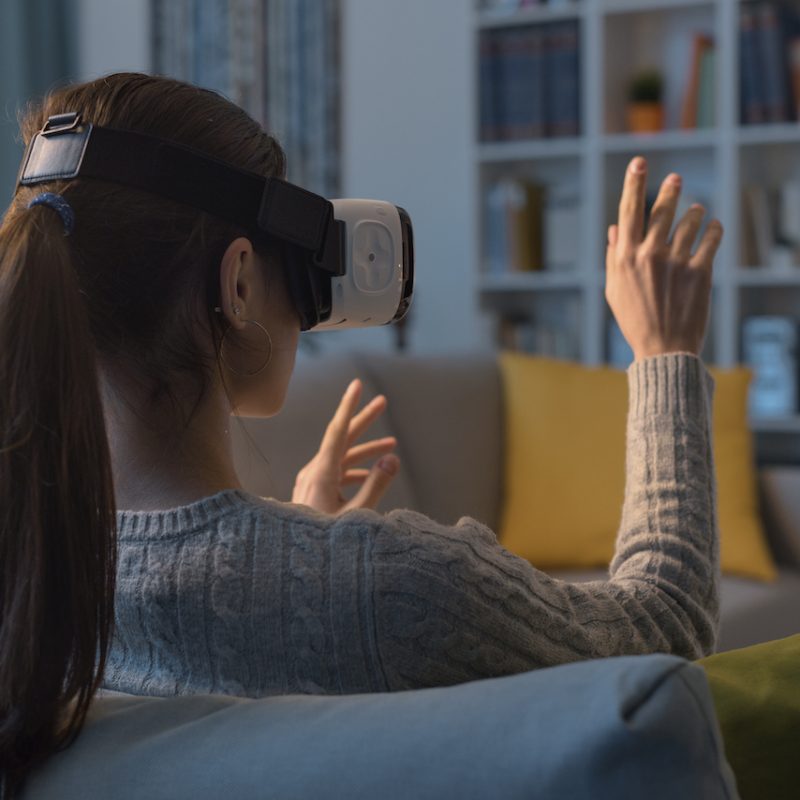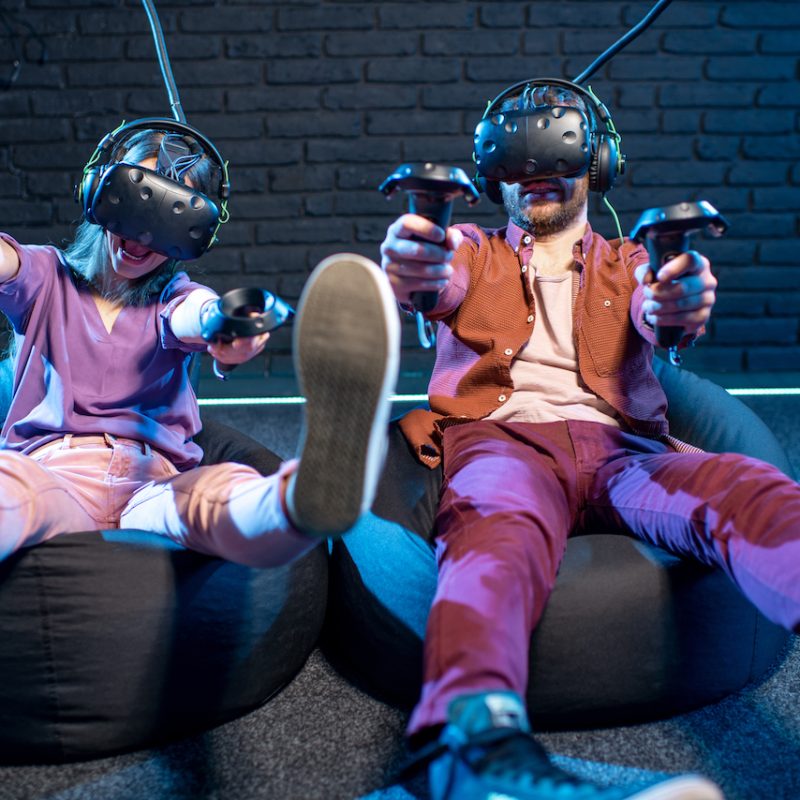The concept of creating an immersive, digital experience was first introduced by science fiction writers Ray Bradbury and Arthur C. Clarke. However, it wasn’t until the late 1960s that VR started to become a tangible technology. Witness the history of VR as we explore its journey throughout the years.
The History of VR
Virtual reality, or VR, is an immersive technology that enables users to experience and interact with a simulated environment. In other words, VR is a fictional world that you can see through a special headset, and sometimes, touch, using controllers.
The concept of VR can be traced back as early as the 1930s with a short story called Pygmalion’s Spectacles. This story, written by Stanley G. Weinbaum, describes a pair of glasses that allows the wearer to experience a fictional world through their senses. While this was just a work of fiction, it sparked the imagination of many and laid the foundation for VR as we know it today.
Virtual Reality Evolution
Once the idea of virtual reality was born, it was a race to the finish line to see who could bring this new technology to life.
The First VR Experience
In 1962, the Sensorama was created— a mechanical booth that presented short films in 3D with accompanying sounds, smells, and vibrations. It was the first true example of an immersive experience and important to the history of VR, but it lacked any form of interaction from the user.
The Birth of the Head-Mounted Display (HMD)
Computer scientist Ivan Sutherland created what is considered to be the first head-mounted display (HMD) in 1968. The device was called “The Sword of Damocles” and was a giant contraption that could only be used while suspended from the ceiling.
Personal Computers Bring VR Closer to Home
With the emergence of personal computers in the 1970s and the history of VR ideas, hackers and programmers began experimenting with creating their own virtual reality experiences.
In 1987, Jaron Lanier coined the term “virtual reality” and founded VPL Research, a company that developed and sold VR equipment such as gloves and goggles. However, these early attempts at VR were still limited by technology and were too expensive for mainstream use.
The Rise of Virtual Reality
The 1990s brought significant advancements in VR technology with the release of Sega VR and Virtuality, two popular gaming systems that used headsets and hand controllers. However, due to high costs and motion sickness issues, these systems were not widely adopted.
In 1992, NASA’s Ames Research Center developed a virtual reality environment for astronauts to train in space simulations. This was one of the first successful uses of VR in the military and space industries.
Modern Virtual Reality
The 21st century has seen a surge in VR technology with the introduction of better graphics, motion tracking, and affordable headsets such as Oculus Rift, HTC Vive, and PlayStation VR. These advancements thanks to the history of VR have opened up opportunities for VR to be used in various industries beyond gaming.
From the Past to the Future
Virtual reality has come a long way since its inception in the 1930s, and there is no doubt that it will continue to evolve and advance.
As technology continues to progress, virtual reality may become a part of our daily lives— from working remotely to attending virtual events and socializing with friends in a simulated environment. Even the new Apple Vision Pro aims to bring your phone to life as an interactive screen that you can see and interact with through a VR headset. Now the question is, will the future have simple contact lenses that have all the same uses? Only time will tell.
Experience VR for Yourself at Stars and Strikes
At Stars and Strikes, you can witness what the history of VR has brought us today. We offer a one-of-a-kind VR experience with our state-of-the-art VR arcade. From heart-pumping action to immersive simulations, there is something for everyone at our VR arcade.
Don’t miss out on the future of entertainment—visit us today!




